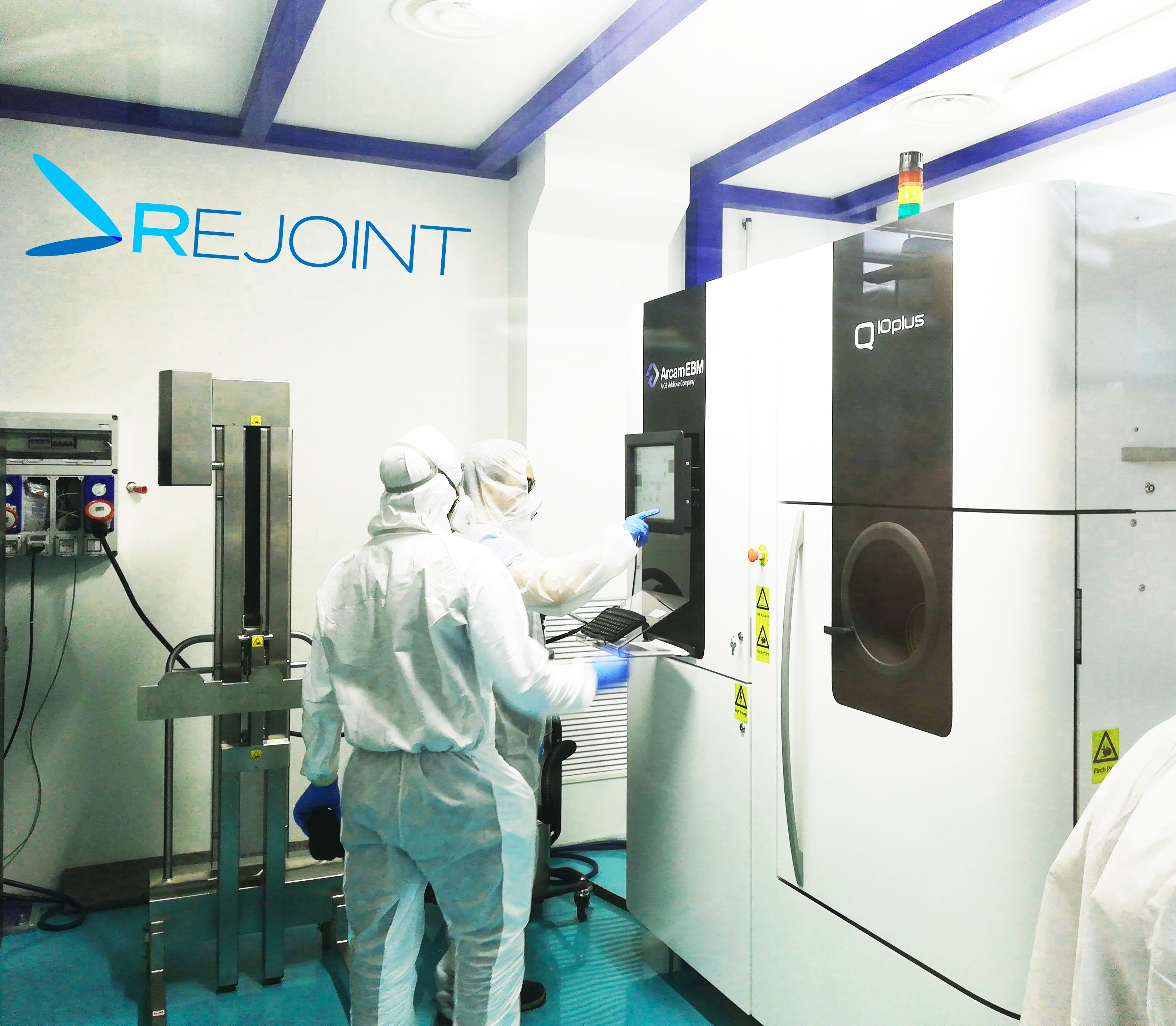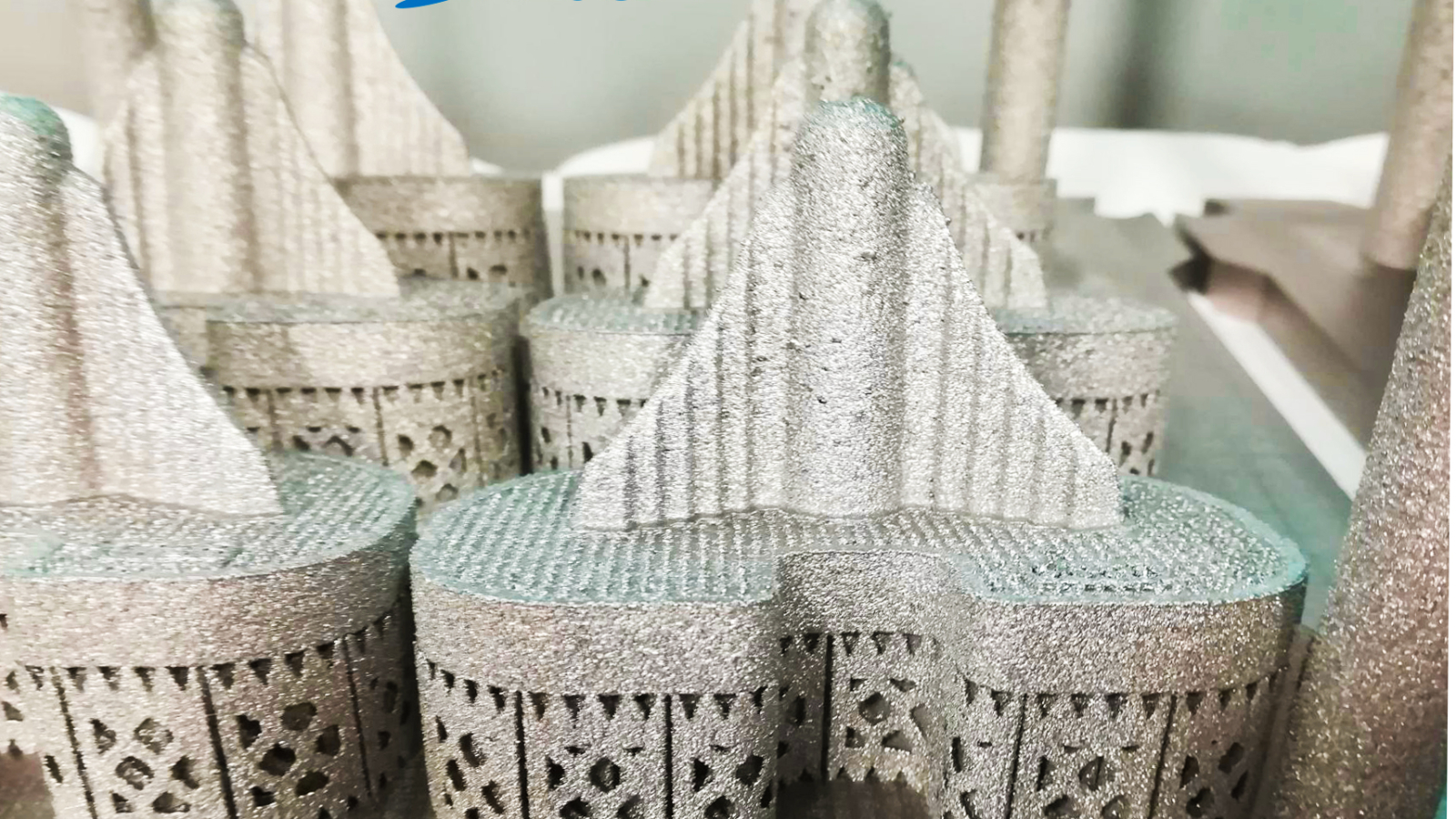REJOINT, an Italian medical implant manufacturer, is introducing mass customization and therapy personalization through a combination of additive manufacturing technology with artificial intelligence.
Specifically, the company will be using GE Additive Arcam’s Electron Beam Melting (EBM) technology and computerized analysis of intraoperative and post-operative data collection through IoT-connected sensorized wearables. This will help REJOINT in fabricating personalized medical devices for patients in the form of knee implants.

Combining AI with 3D printing for medical devices
Based in Bologna, Italy, REJOINT was founded in 2015 by a team with significant experience in the orthopedic sector, with the company recently entered the knee arthroplasty market.
REJOINT’s objective centers on providing patients with a customized medical solution; both additive manufacturing and artificial intelligence are integral to its goals and growth strategy. For producing its personalized prostheses, the company opted to use 3D printing technology from GE Additive.
“When it came to additive manufacturing, we were initially undecided about the most suitable solution for personalized cobalt-chrome prosthetics and were evaluating DMLM and EBM. Both modalities, in fact offer a good level of resolution and quality, but we ultimately opted for the GE Additive Arcam EBM Q10plus system. The knowledge and industrialization support that GE was able to provide us and the professional experience of their local team here in Italy also informed our decision,” comments Gian Guido Riva, CEO at REJOINT.
The market for knee implants is estimated at around five million implants per year worldwide. In 2011 the number of surgical procedures was 150 per 100,000 inhabitants, with peaks of 250 in some markets such as Austria and Switzerland.

Until recently, the knee arthroplasty market solely consisted of standard prosthetic systems, with only a limited range of sizes available. Correct and precise sizing and positioning is a critical factor for the type of prostheses. Typically, knee joints have to withstand point loads that can reach levels of over 300 kilograms. Minimal dimensional differences between the patient’s bone elements and an implant can lead to pain and inflammation.
For the patient, inadequate sizing means constant awareness of the presence of an artificial joint, as well as leading to muscle and ligament decay. Patient feedback can sometimes reflect issues with an implant. Dissatisfaction is often largely related to the suboptimal sizing of the implanted prosthesis.
As such, to produce tailored prostheses for the patient, REJOINT leverages the design freedom offered by additive manufacturing. The company begins its process by 3D modelling the patient’s CT scan, and then uses algorithms to analyze the images and identify the most suitable size for each specific case. Artificial intelligence compares the unique anatomy of a patient on several thousand prosthetic dimensions, each with as many dimensional variables in specific areas of the implant.

The optimal configuration is identified and offered to the surgeon, for positioning both the prosthetic components and for simulating the operation. The analytical process forms the core of the prosthesis production process and for patient-specific tools for the planning of the intervention – which is carried out with the support of computer-aided surgery tools.
Manufacturing on Demand
“Having all this data made us realize that we could link it to the information recorded during the operation. And in turn, this data could still be further improved upon if we could collect through the use of wearable devices (such as sensorized headbands and socks), both pre- and post-operative measurements, on how the patient loads their limb or bends their knee, until post-operative evaluation questionnaires have been completed,” continues Riva.
Professor Maurilio Marcacci, who is head of the Joint Knee Reconstruction Centre at Humanitas Research Hospital in Milan and performed the first implant, claims that the initial application of this technology has achieved a high degree of patient satisfaction.
Currently, REJOINT is in the process of obtaining FDA clearance, which is expected in the first half of 2021. Certification will mean access to the US market, which accounts for 62 percent of the world market for orthopedic devices and more than 70 percent of the value of the global market for knee implants. Furthermore, REJOINT is working with GE Additive to reduce powder-based production costs, focusing on the reduction of cycle times and the optimization of parameters – including through the development of remote production control stations.

Personalized healthcare with 3D printing
A key advantage of 3D printing in the medical sector is its ability for providing patient-specific healthcare. For example, customized prosthesis is being provided in Sierra Leone by dutch nonprofit organization 3D Sierra Leone. Using 3D scanning to measure each patient, a tailored device is then produced for the amputees in the country, who are without access to relevant medical care.
Outside of prostheses, 3D printing has also been used by a doctor at Cleveland Clinic to produce patient-specific airway stents, which have also received clearance from the FDA for implantation in patients.
3D printing can also play a significant role in patient-specific preoperative planning. Earlier in June, we reported on an anaesthesia team in Israel that recently used 3D printing and virtual reality to produce an exact model of the airway of a 7-year-old girl, as part of an operation to remove a section of her lung.
* This article is reprinted from 3D Printing Industry. If you are involved in infringement, please contact us to delete it.
Author: Anas Essop


Leave A Comment